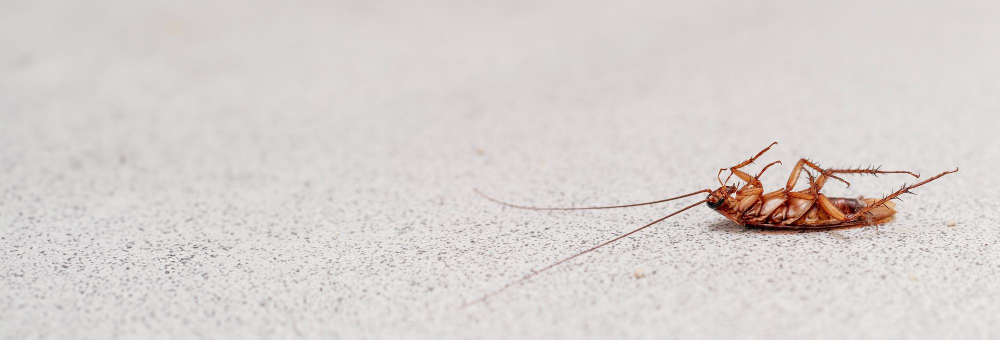
Minor pest activity often indicates a developing infestation. Rodents and cockroaches can carry pathogens, contaminate surfaces, and trigger allergies or asthma. Rodents may gnaw on wiring and insulation, increasing fire risk and repair costs. Termites, carpenter ants, and moisture-seeking pests can damage wood and drywall, especially where leaks or condensation are present. Small entry points and seasonal changes can allow pests to return if underlying conditions are not addressed.
DIY treatments may reduce visible activity but often miss nests, entry routes, or conducive conditions, leading to recurrence. Early, targeted intervention is typically less costly than repairing structural damage or remediating contamination. Professional services that offer rapid response and service guarantees, such as a 24-hour visit window and a 90-day warranty, can help resolve issues and provide follow-up to prevent reinfestation. Acting when early signs appear—such as droppings, gnaw marks, frass, or scratching—reduces risk and overall expense.
Pest droppings are often the first visible indicator of an infestation, even in clean homes. Small, dark pellets near food storage, along walls, or in hidden areas commonly indicate rodents and warrant prompt control measures.
Cockroach droppings resemble black pepper or fine coffee grounds and are frequently found in kitchens, cabinets, and around appliances. Smear marks or fine debris along baseboards can also suggest roach activity. Clusters of droppings typically indicate regular traffic or established nesting areas.
Recommended actions include:
Early intervention lowers health risks, helps prevent structural damage from persistent pests, and can reduce overall remediation costs.
Early detection can prevent extensive drywall damage. In addition to droppings or smear marks, look for faint termite mud tubes, soft or spongy drywall, blistered paint, hollow-sounding sections, and small pinholes. Identifying problems at this stage can limit both structural impact and cost.
Addressing a small, localized infestation typically ranges from about $150 to $300 for initial treatment, while delaying for a year or more can lead to concealed damage in studs, sill plates, and drywall, with repairs often totaling $2,000 to $10,000 or more. These higher costs reflect both remediation and reconstruction.
Practical steps include:
If indicators are present or conditions are unclear, contact a licensed pest control provider for inspection, targeted treatment, and follow-up monitoring to limit damage and maintain property value.
Seasonal sealing and sanitation help limit pest entry and reduce available food and shelter. As temperatures change, many insects and rodents seek indoor refuge. Inspect and seal gaps around doors, windows, foundations, siding, pipes, vents, and utility lines, using materials such as door sweeps, weatherstripping, silicone or polyurethane caulk, and rodent-proof mesh where appropriate.
Address larger structural openings and repair damaged screens. Complement sealing with routine sanitation. Vacuum and sweep regularly, promptly clean spills, and remove food residues that attract pests. Store dry goods in airtight, pest-resistant containers (e.g., hard plastic or glass with tight-fitting lids).
Manage trash by using lidded bins, tying bags securely, and removing waste frequently. Reduce clutter to eliminate harborage sites, especially in basements, garages, attics, and storage areas. Schedule inspections during periods of increased pest activity—typically spring and fall—to identify new entry points, moisture issues, and signs of nesting or droppings.
Correct outdoor conditions that support pests by maintaining vegetation away from structures, addressing standing water, and storing firewood off the ground and away from the home. These measures improve overall pest prevention, lower the likelihood of infestations, and can reduce reliance on chemical controls.
Regular monitoring and timely maintenance increase effectiveness over time.
Small signs like droppings, gnaw marks, or faint drywall damage can quickly escalate if left unchecked.
Hawx Pest Control is equipped to intervene before minor issues spiral into costly infestations. Their technicians identify root causes—such as hidden entry points, moisture sources, or nesting zones—and apply targeted treatments to stop pests from spreading deeper into the home.
By combining fast response with follow-up prevention, Hawx helps homeowners avoid the cycle of recurring infestations and the escalating costs of structural repairs or health risks.
Acting early with professional support ensures problems are resolved at the source, not just temporarily suppressed.
Fast response is only useful if the results last. A 90-day guarantee provides a defined period during which follow-up treatments are covered if pests return, typically at no additional cost.
This timeframe allows enough observation to verify that initial treatments were effective and to address residual activity before infestations expand or lead to property damage and additional service expenses.
Providers such as Presidio Pest Management use a 90-day guarantee to indicate accountability for outcomes and customer satisfaction. The approach can reduce total costs by addressing recurrence promptly within the covered period.
If pests reappear within 90 days, the standard process is to contact the provider for re-inspection and re-treatment under the terms of the guarantee.